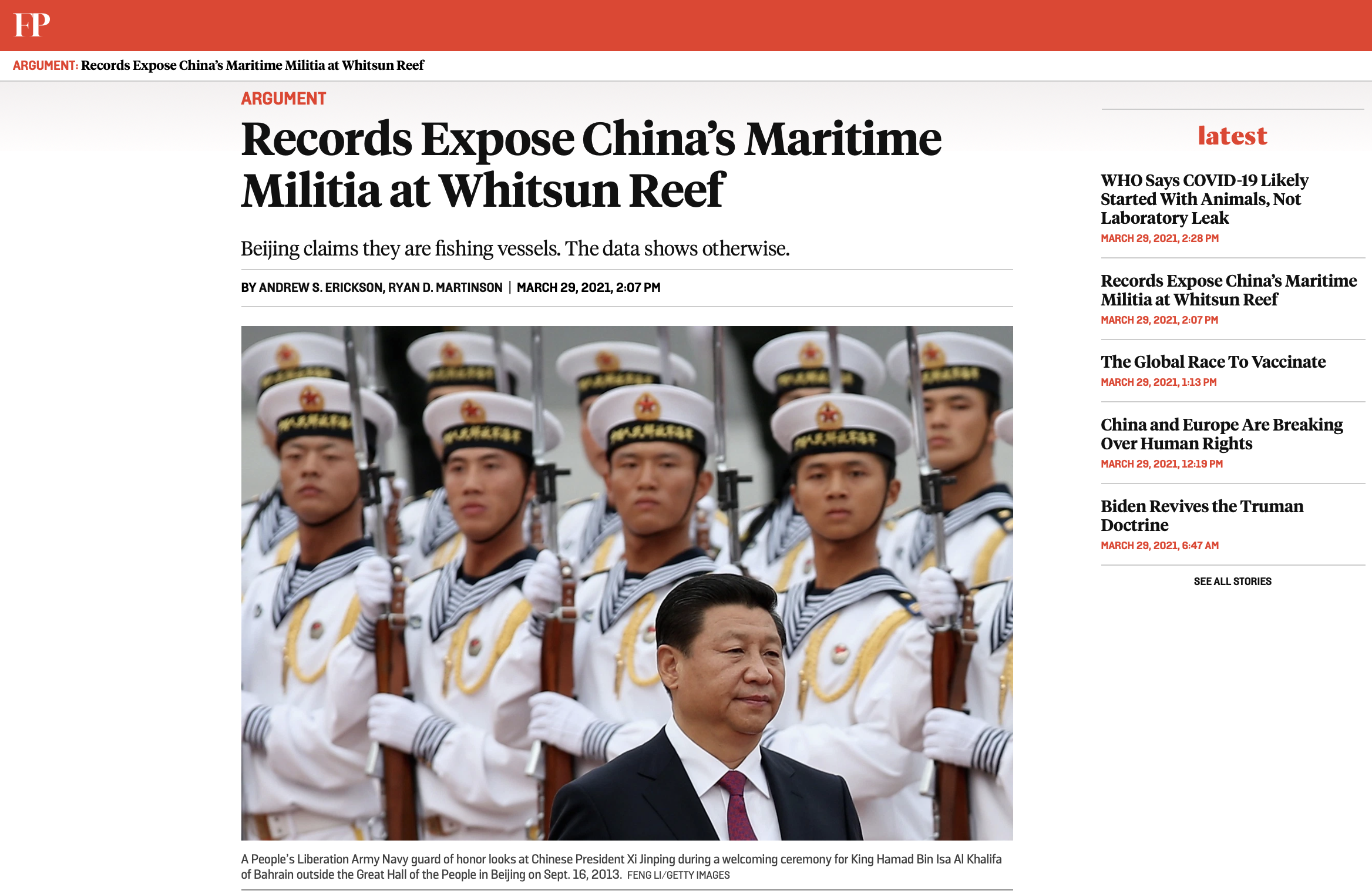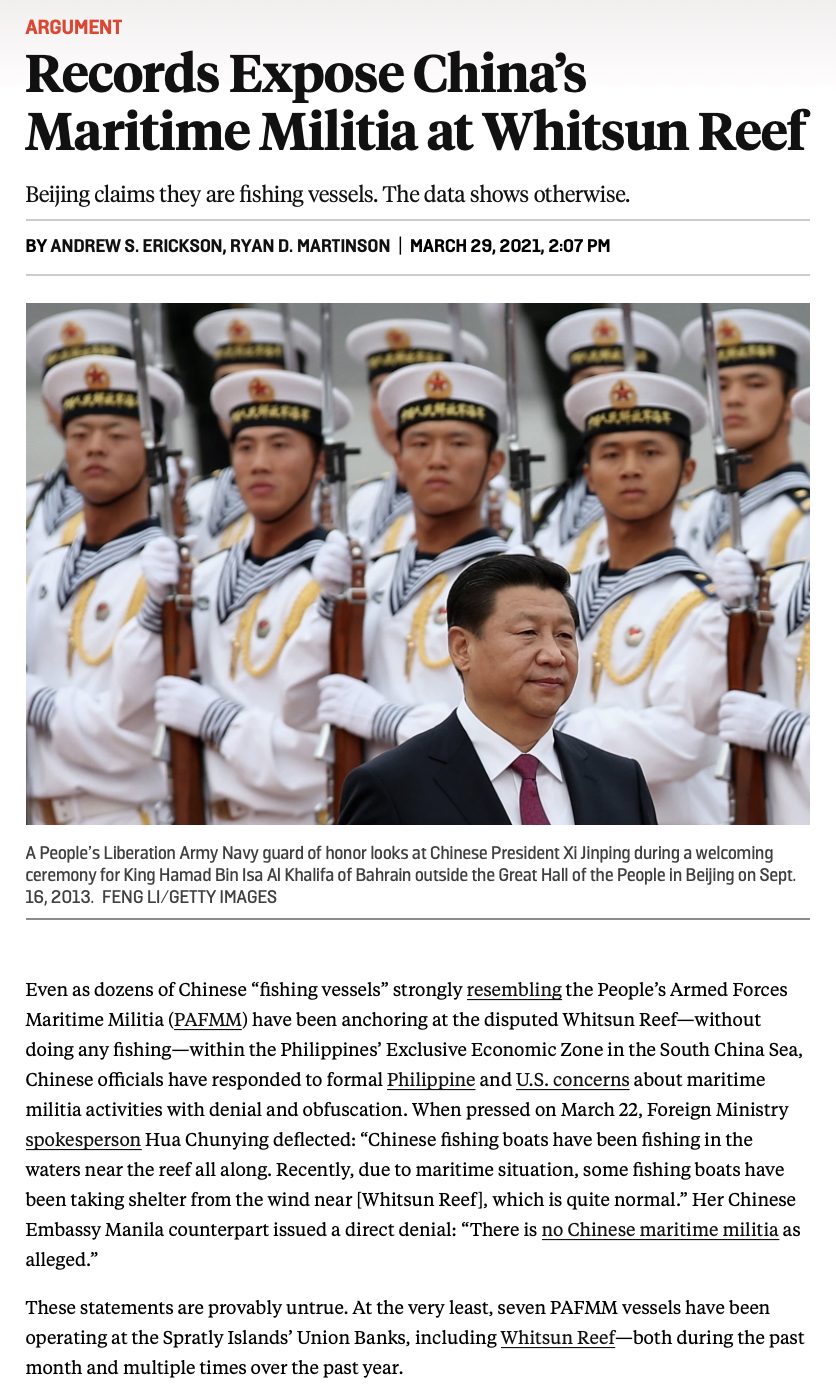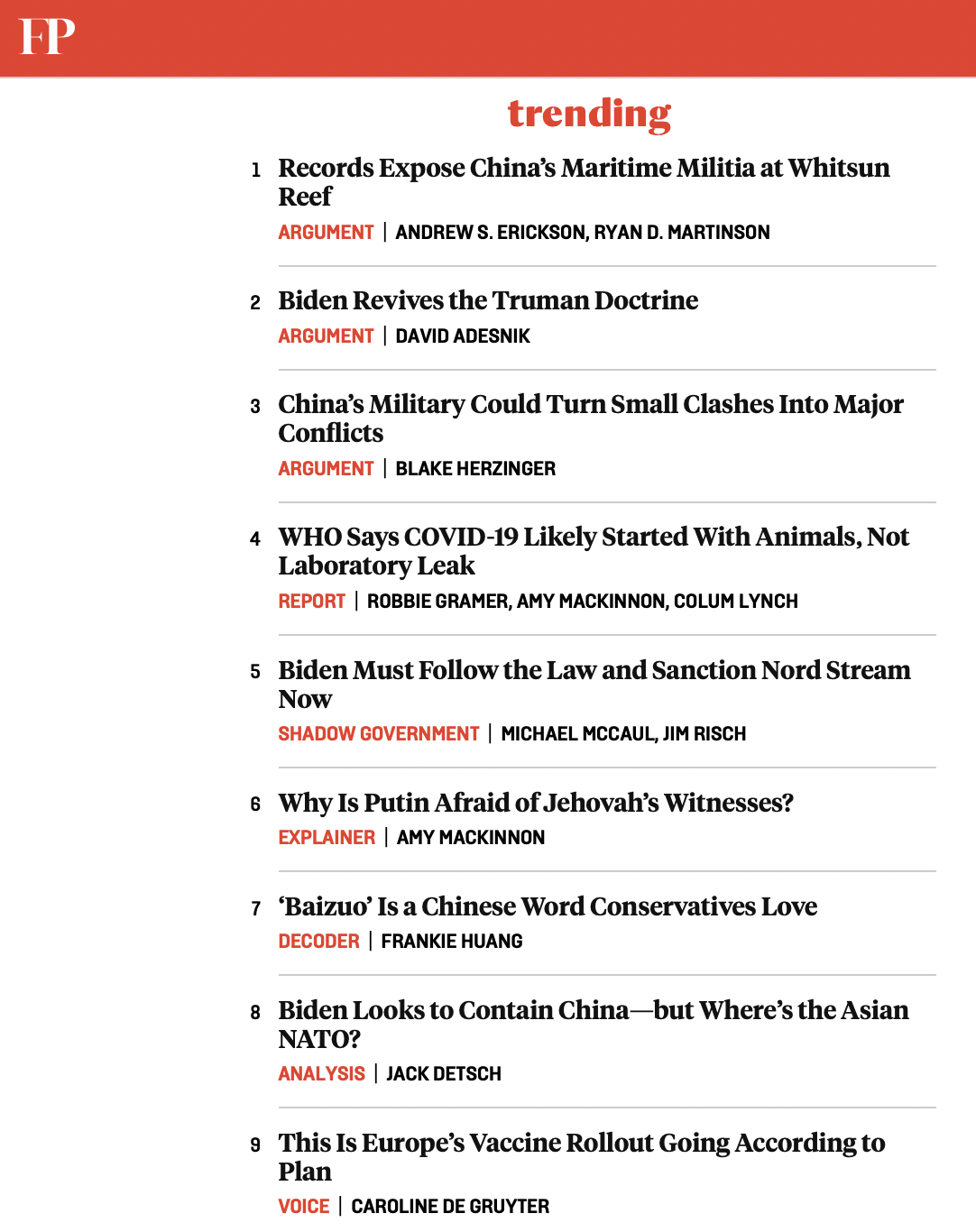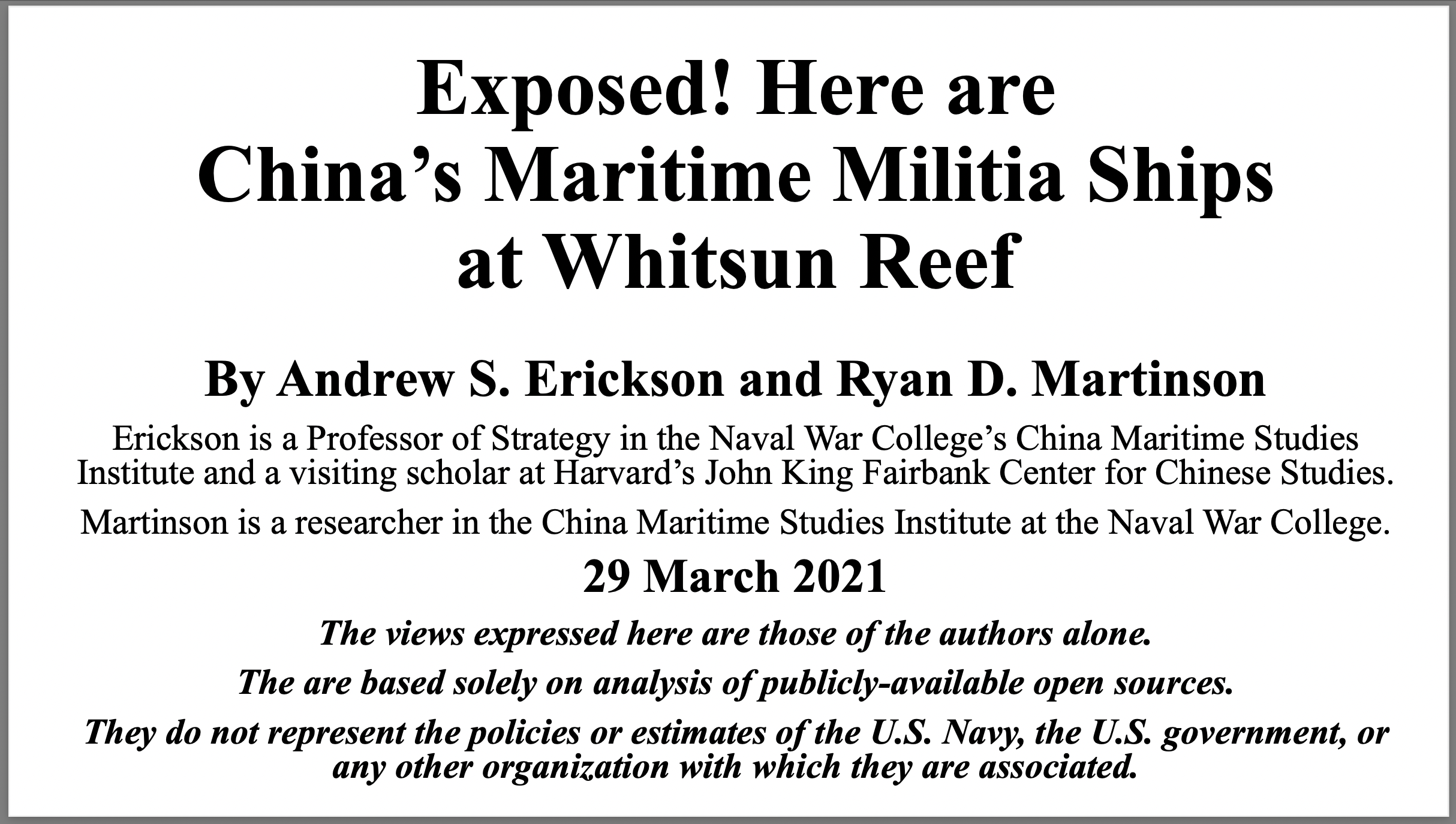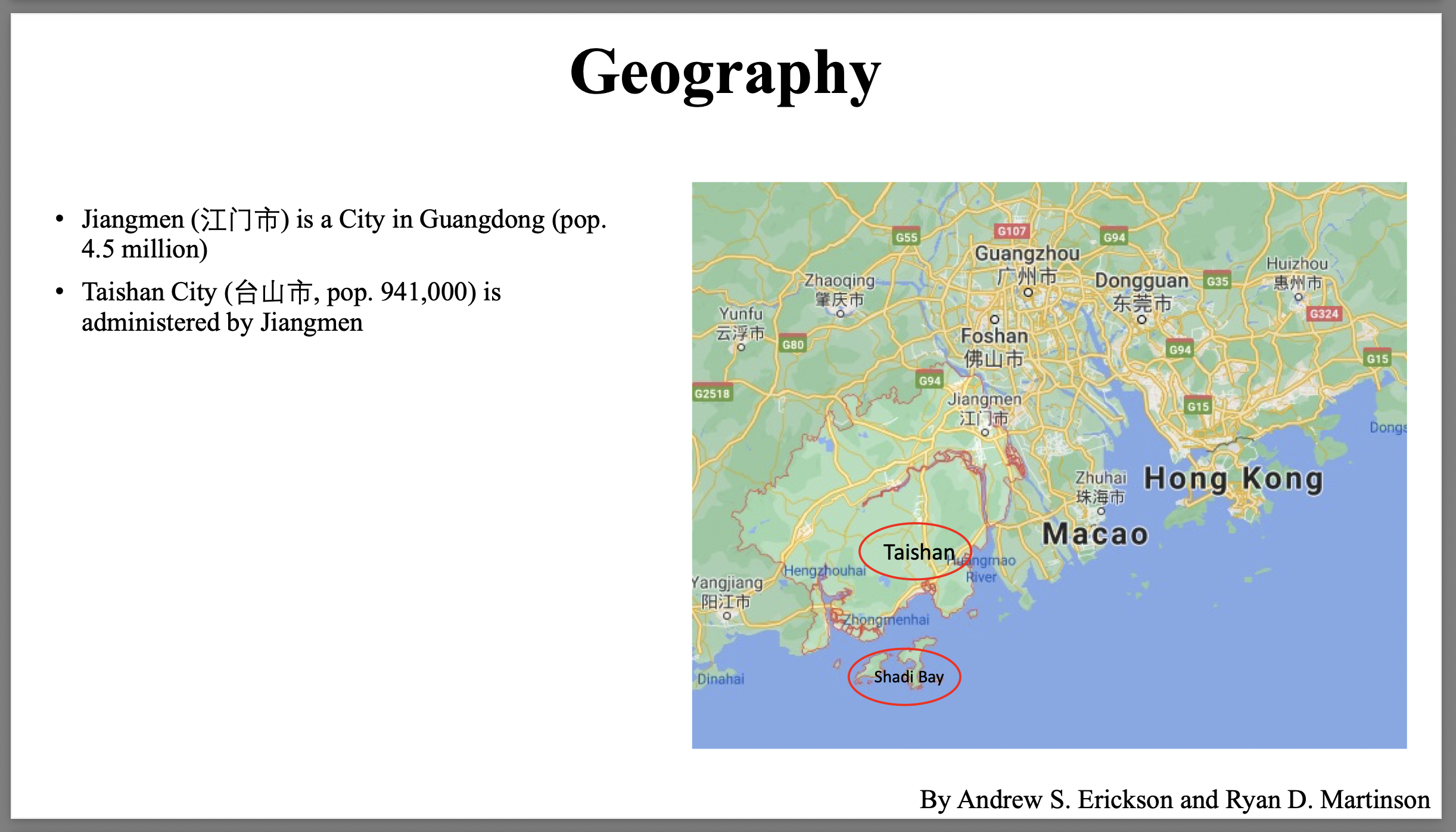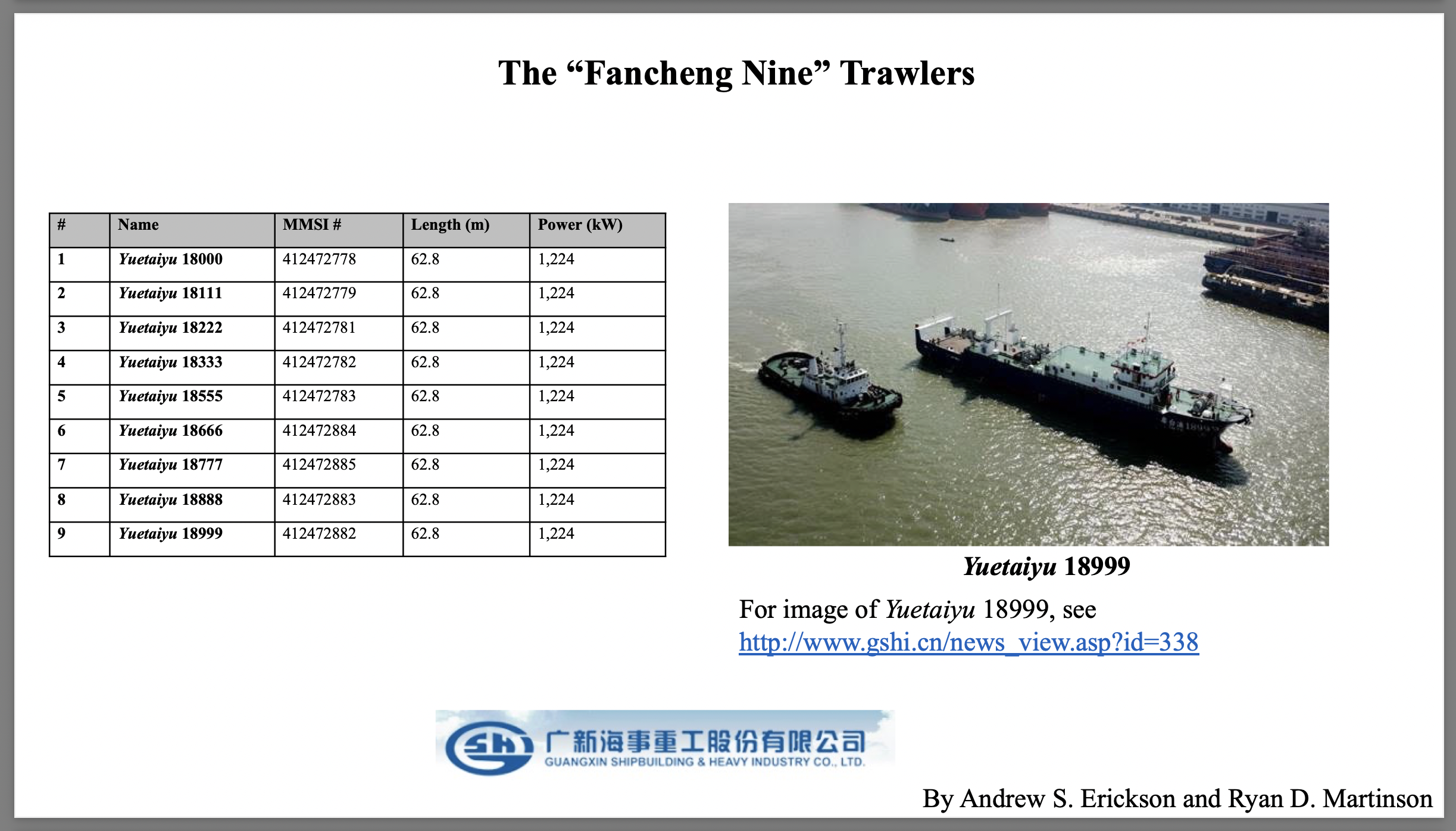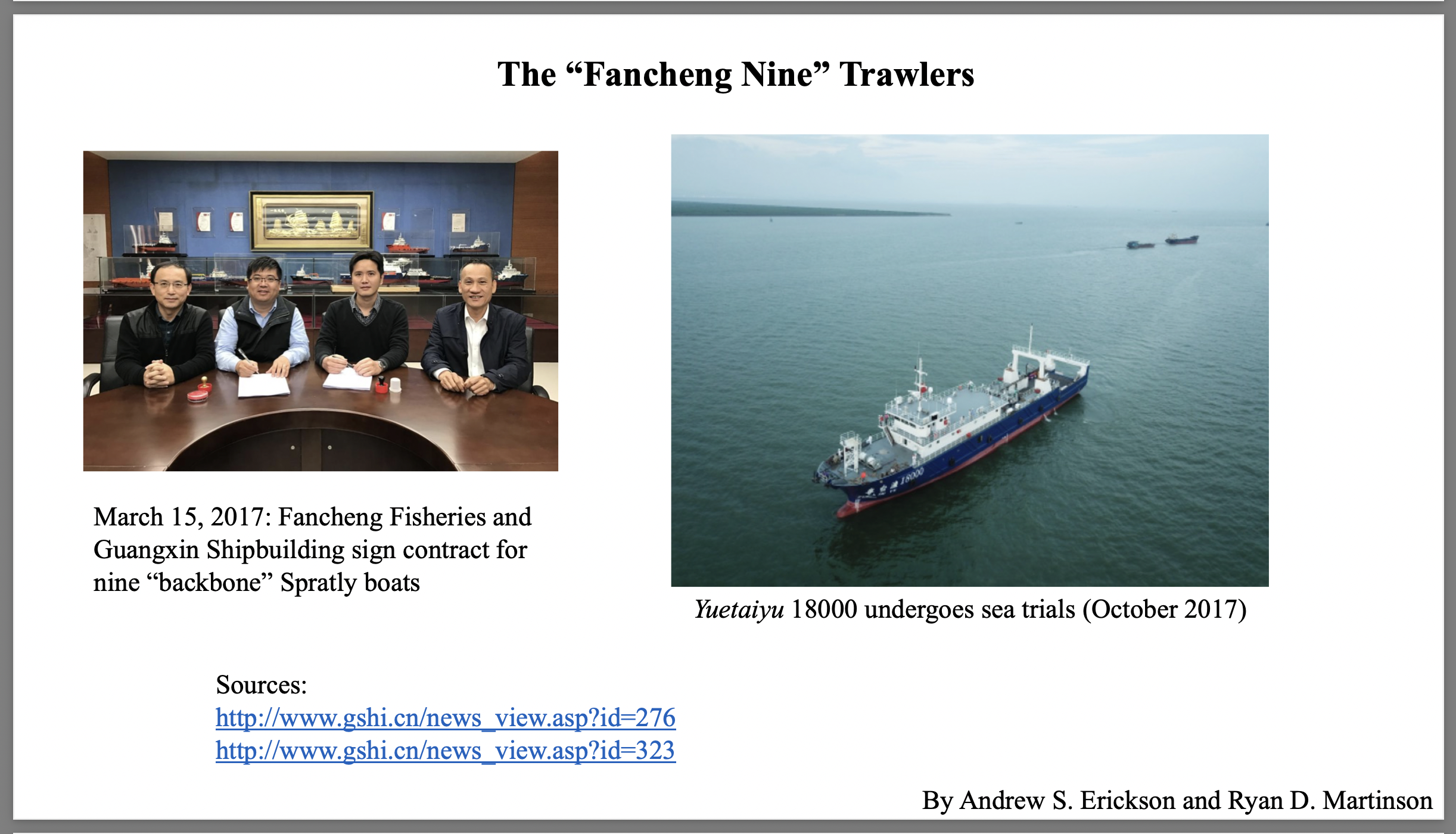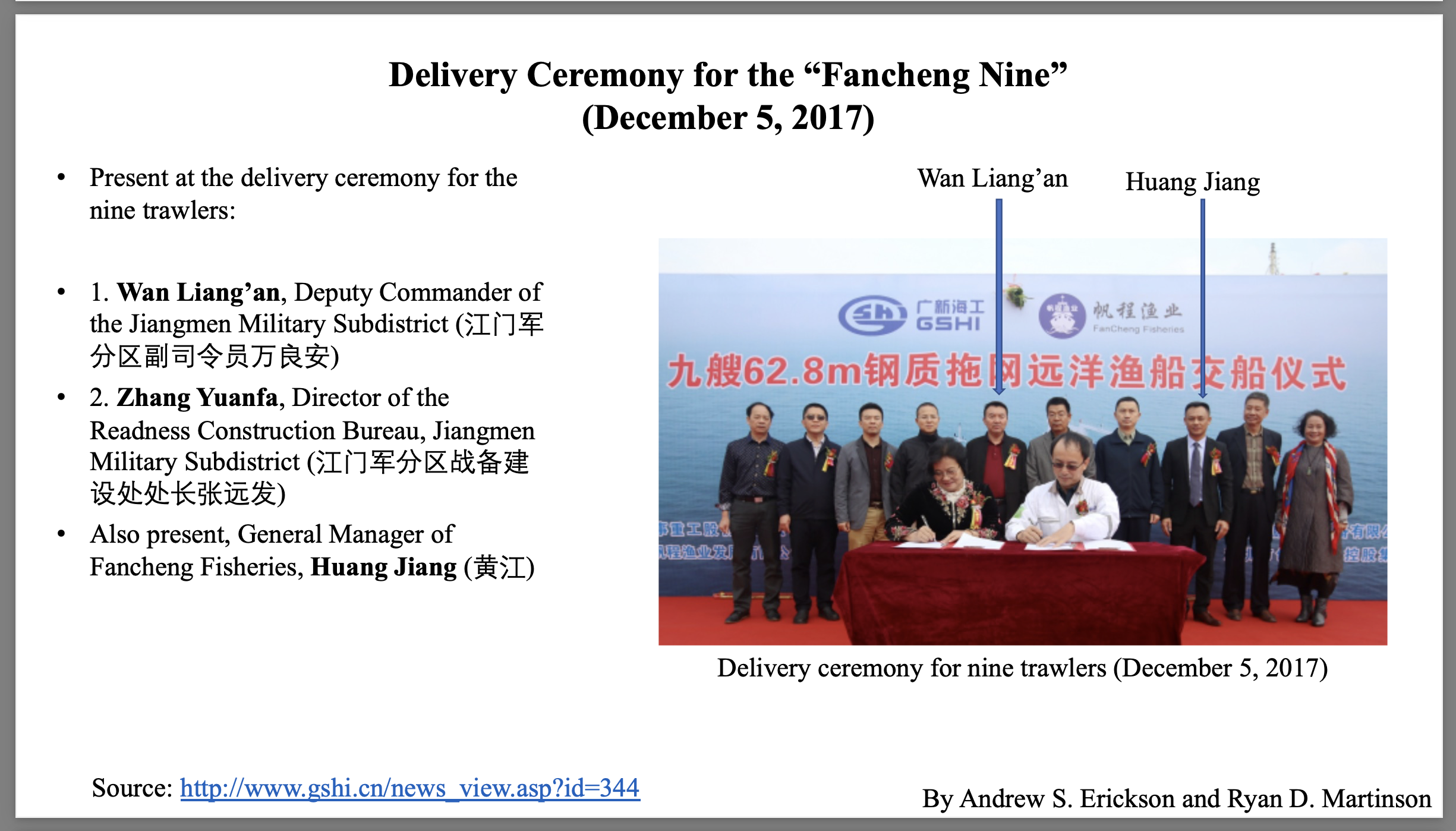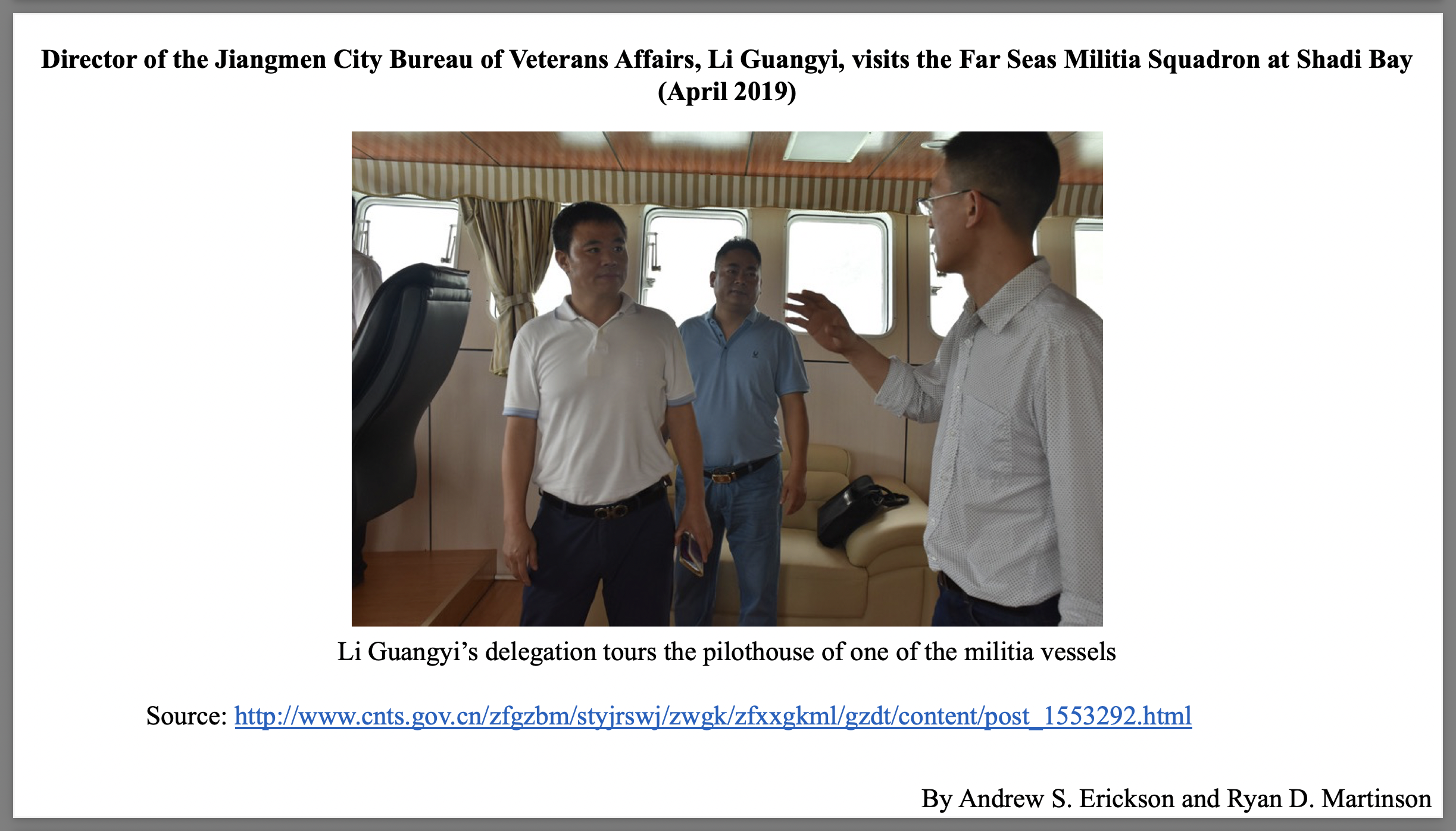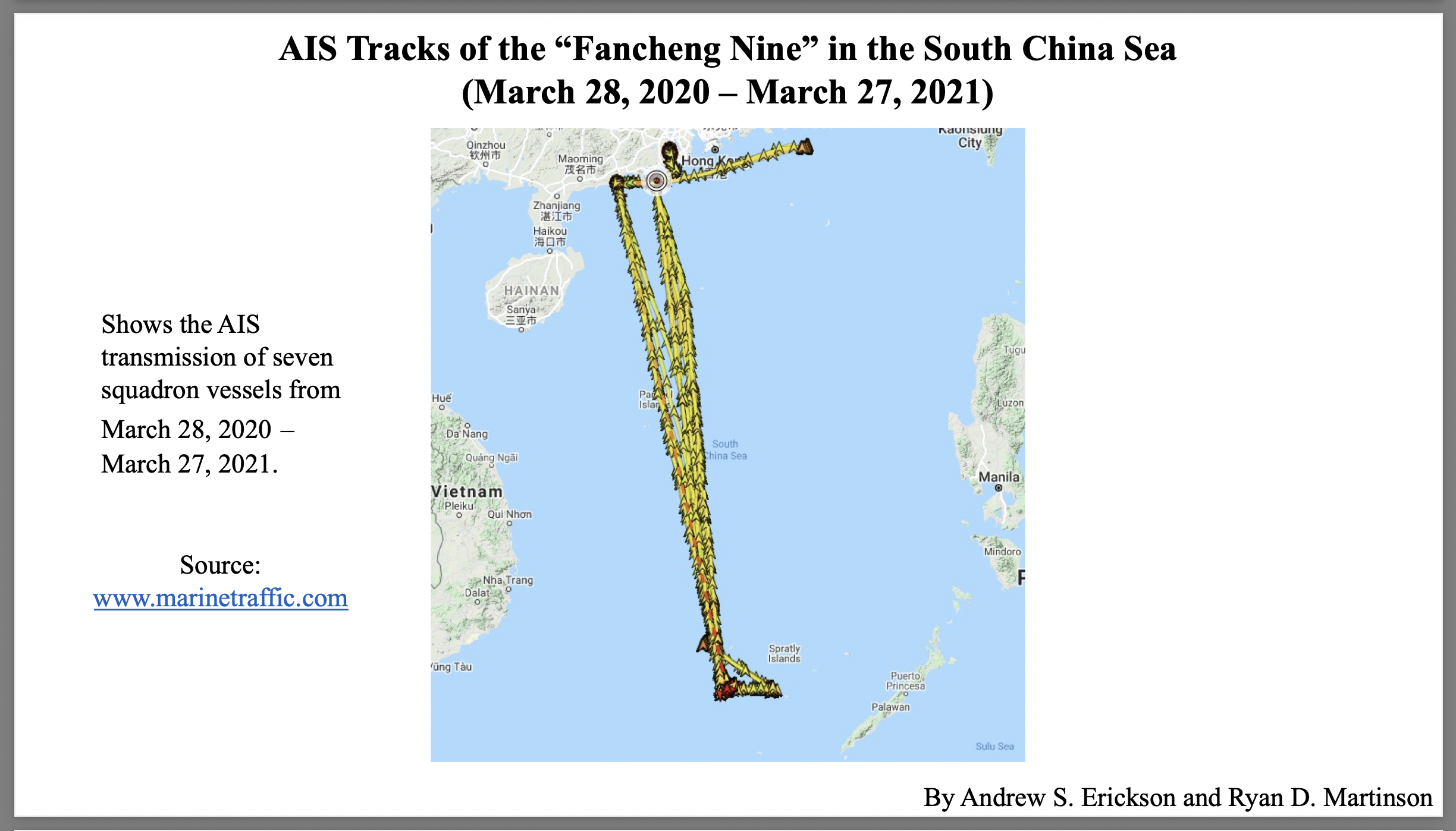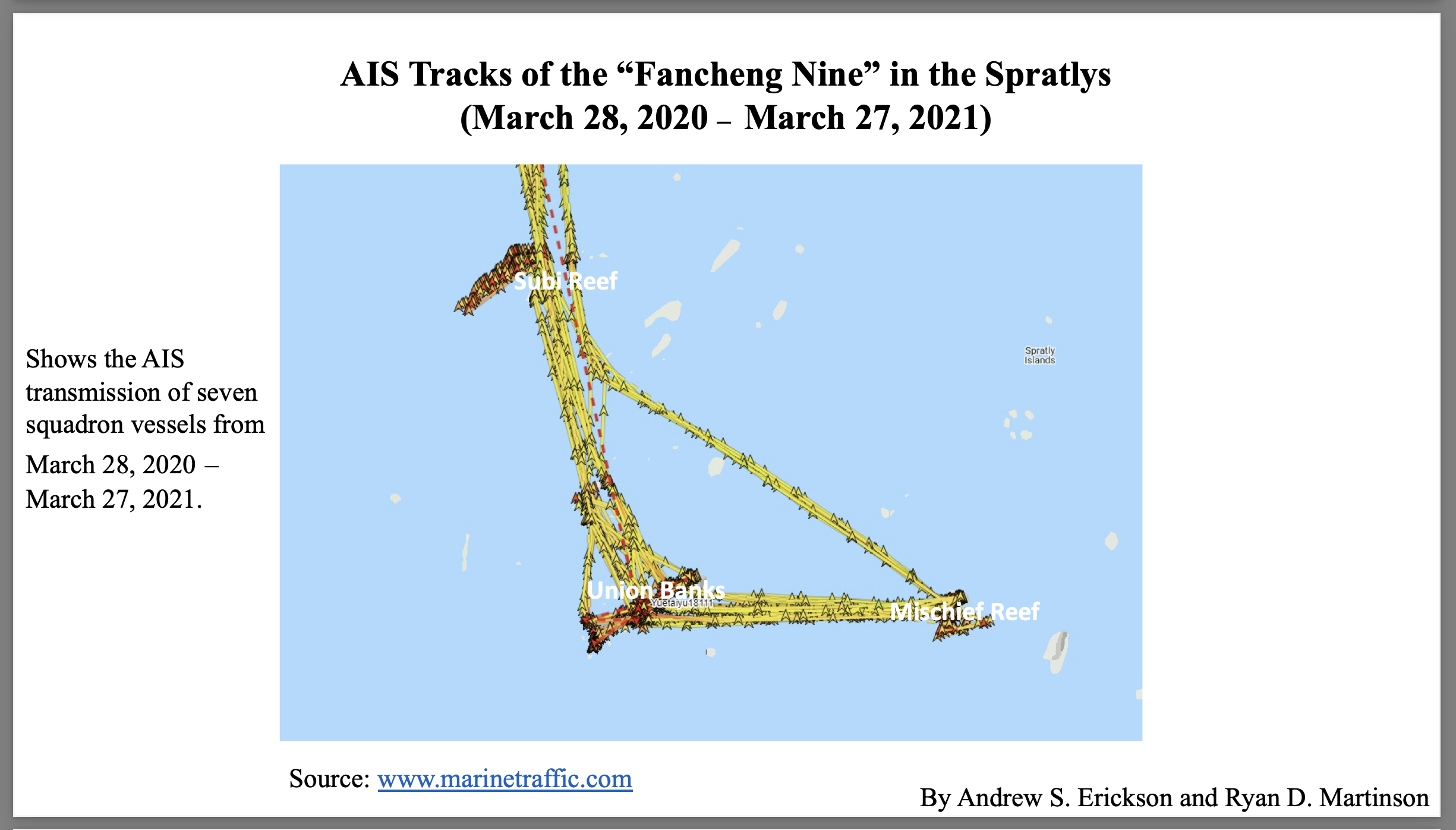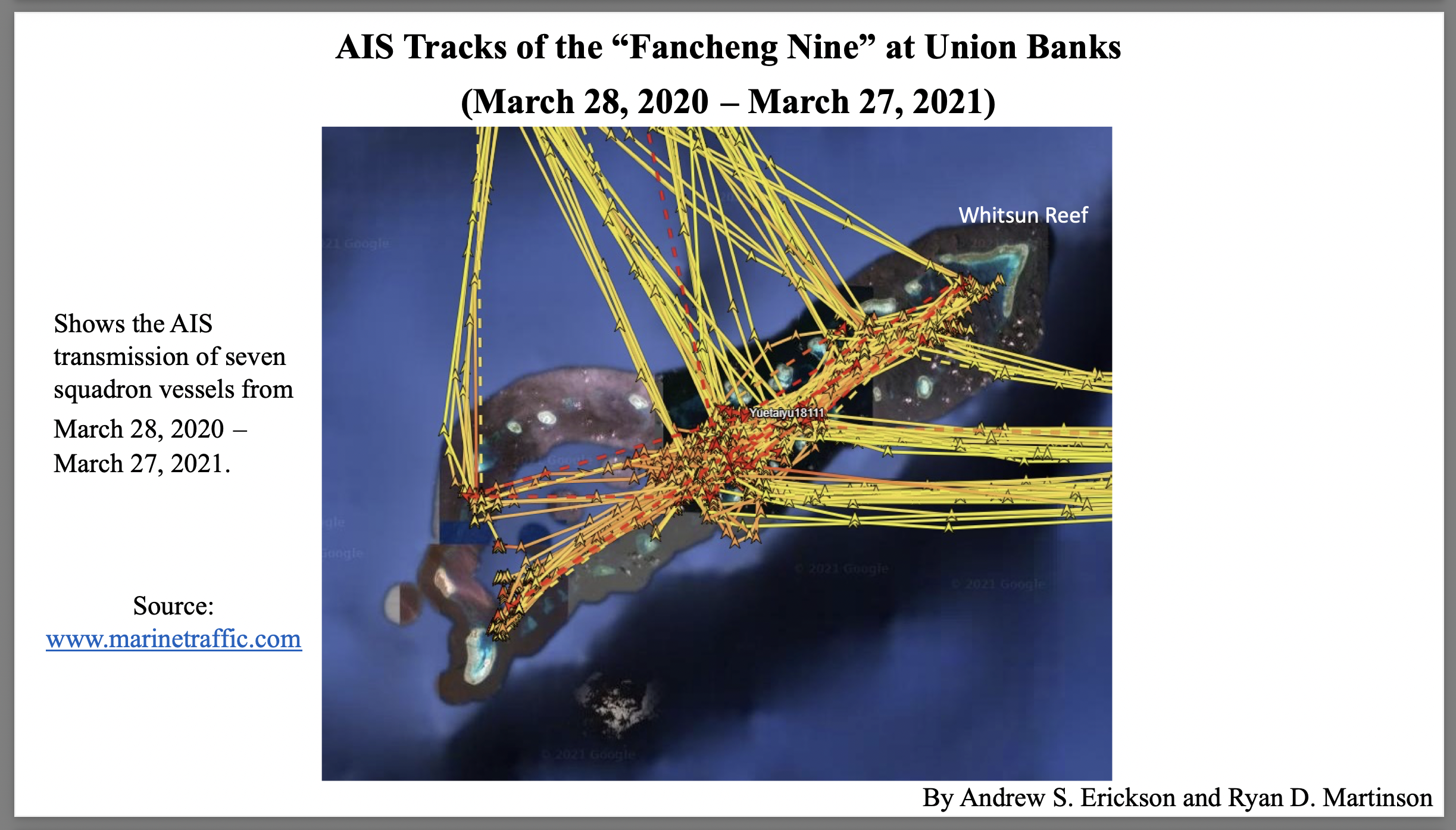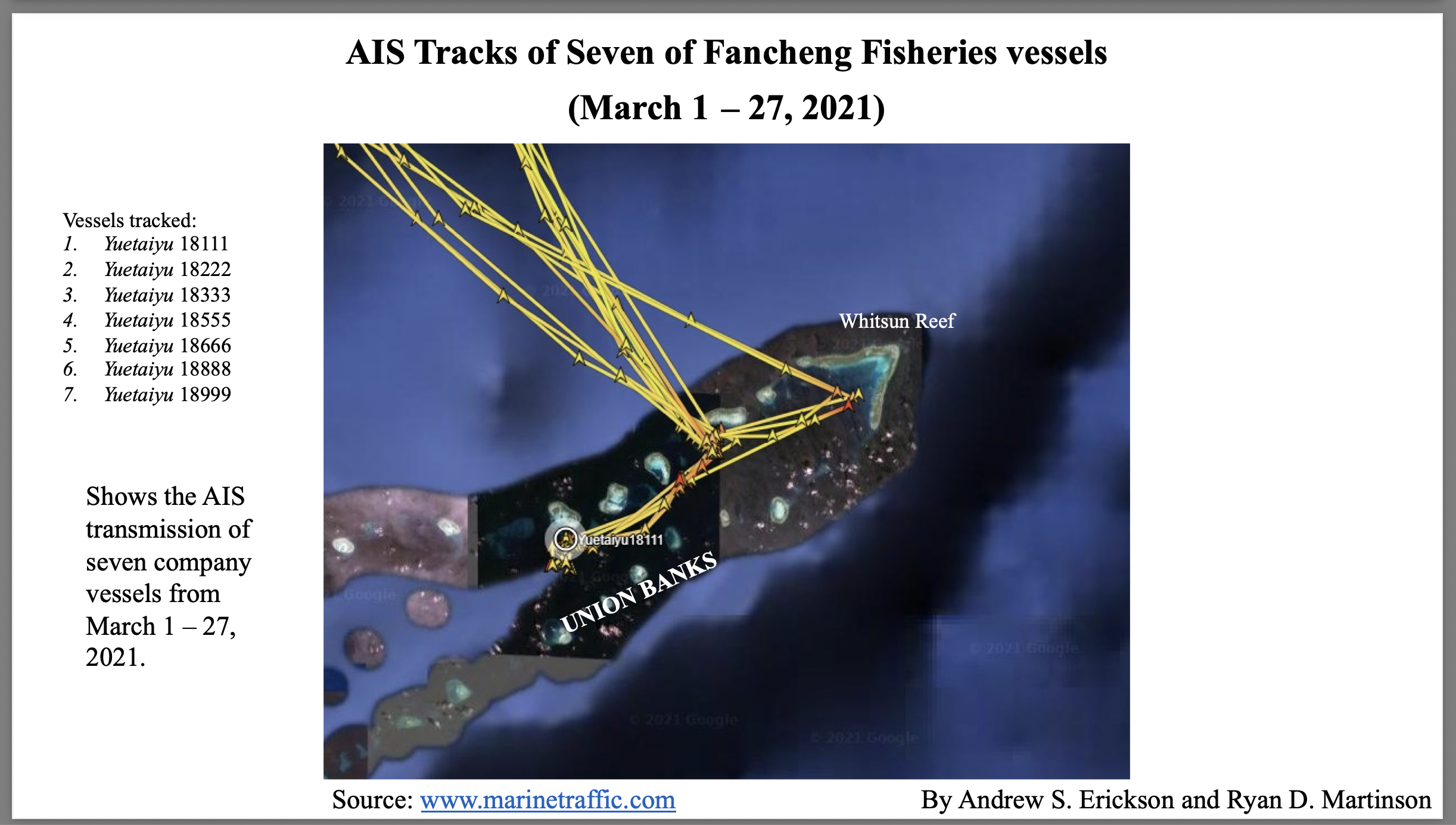Records Expose China’s Maritime Militia at Whitsun Reef
Andrew S. Erickson and Ryan D. Martinson, “Records Expose China’s Maritime Militia at Whitsun Reef,” Foreign Policy, 29 March 2021.
Beijing Claims They Are Fishing Vessels. The Data Shows Otherwise.
Accompanying slide deck: Andrew S. Erickson and Ryan D. Martinson, “Exposed! Here are China’s Maritime Militia Ships at Whitsun Reef,” China Analysis from Original Sources 以第一手资料研究中国, 29 March 2021.
Even as dozens of Chinese “fishing vessels” strongly resembling the People’s Armed Forces Maritime Militia (PAFMM) have been anchoring at the disputed Whitsun Reef—without doing any fishing—within the Philippines’ Exclusive Economic Zone in the South China Sea, Chinese officials have responded to formal Philippine and U.S. concerns about maritime militia activities with denial and obfuscation. When pressed on March 22, Foreign Ministry spokesperson Hua Chunying deflected: “Chinese fishing boats have been fishing in the waters near the reef all along. Recently, due to maritime situation, some fishing boats have been taking shelter from the wind near [Whitsun Reef], which is quite normal.” Her Chinese Embassy Manila counterpart issued a direct denial: “There is no Chinese maritime militia as alleged.”
These statements are provably untrue. At the very least, seven PAFMM vessels have been operating at the Spratly Islands’ Union Banks, including Whitsun Reef—both during the past month and multiple times over the past year.
Both in February and March this year, identified PAFMM vessels transmitting automatic identification system (AIS) signals were present in Whitsun’s lagoon. Openly available sources confirm our exposé from multiple angles. The only “paywalls” they lie behind are Chinese characters and vessel-tracking websites. [Click here to view an accompanying PDF with images and links.]
Among the massed “fishing vessels” at Union Banks are at least seven enormous trawlers owned by an obscure fishing company: Taishan Fancheng Fisheries Development. Established in October 2016, it is based in Taishan (population around 1 million), itself administered by Jiangmen, a city of 1.7 million in Guangdong Province. PAFMM units typically reflect their locality’s socioeconomic characteristics. It follows that this organization, based on populous, prosperous coastline, would support a leading unit—perhaps, in some respects, the most advanced PAFMM unit yet developed and deployed.
The seven trawlers currently at Union Banks were built by Guangxin Shipbuilding and Heavy Industry. On March 15, 2017, Fancheng Fisheries and Guangxin Shipbuilding signed a contract for nine 62.8-meter-long “backbone Spratly fishing vessels,” Guangdong’s thirteenth batch of such vessels approved by the Ministry of Agriculture. Guangxin had no experience building fishing vessels but completed the task in just nine months, with sea trials in October 2017 and delivery by December.
Nominally in charge of Fancheng Fisheries, General Manager Huang Jiang is far from the only key player. At the nine trawlers’ delivery ceremony on Dec. 5, 2017, the guests of honor included two Chinese military officers: Wan Liang’an, deputy commander of the Jiangmen military subdistrict, and Zhang Yuanfa, director of the War Readiness Construction Bureau, Jiangmen military subdistrict. The presence of Wan and Zhang indicates the Fancheng Nine were no ordinary fishing vessels but rather the newest additions to the Taishan PAFMM—subject to a People’s Liberation Army (PLA) chain of command.
Distinctively-numbered Yuetaiyu 18000, 18111, 18222, 18333, 18555, 18666, 18777, 18888, and 18999, the Fancheng Nine operate out of Shadi Bay on Shangchuan Island’s southern end. With this base of operations, 105 miles southwest of Hong Kong, they apparently constitute the core of a “Far Seas Militia Squadron.” Plans to establish a Far Seas Militia Squadron were discussed at a Taishan “Armed Forces Work Meeting” in March 2016—the same year Fancheng Fisheries was set up. In PAFMM terminology, “Far Seas” often designates remote waters within the first island chain, including the southern reaches of the South China Sea. … … …

